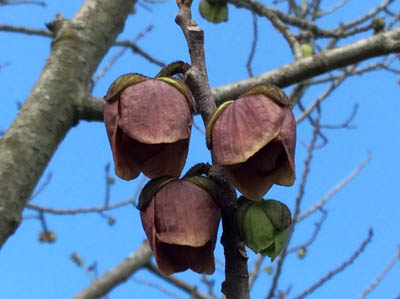
04.08.20 Nellie’s Flowers?
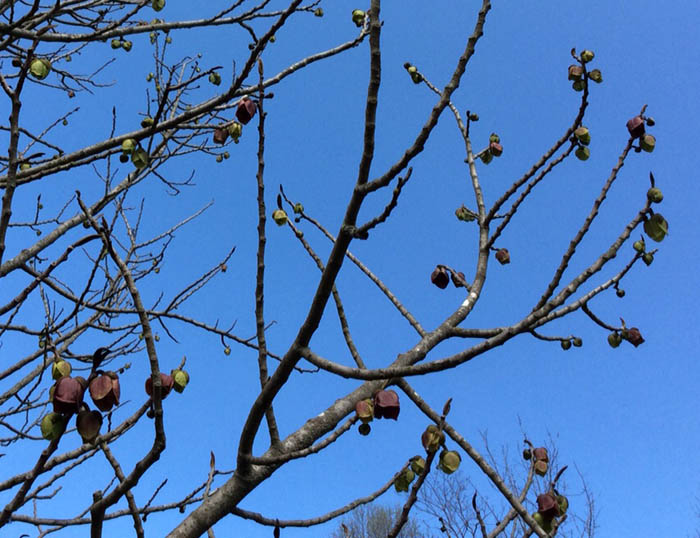
The folk song begins, “Where, oh, where is sweet little Nellie?” and ends with “Way down yonder in the paw paw patch!” Paw Paws, Asimina triloba, are one of the most unusual trees in the Appalachian forest. They are now blooming all through our hollow with their distinctive dark maroon blossoms. The leaves are still tightly wrapped at the tips of the branches, but the length of the branch is decorated with these dark red hanging lanterns. This is the only plant of this sort in North America and is remarkable because it produces the largest fruit of any indigenous tree. Paw paws can weigh up to a pound and are often six inches long and three inches thick! They are unlike any other fruit you have experienced. It is a member of a tropical plant family known as custard apples. The fruit are green and unusually misshapen; they turn black as they ripen. Not something you would normally be tempted to eat, but first peoples and early Americans enjoyed their sweet mango/banana flavor. As strange as the fruit are these flowers. Their smell, when detected is the odor of rotting meat; the flowers are meant to attract flies for their pollination. When we first moved to the Appalachian forest the local lore recommended throwing your chicken bones under the trees to encourage pollination! One of the more wonderful characteristics of this unusual tree is that it has a symbiotic relationship with a beautiful butterfly, the Zebra Swallowtail. Larva of this butterfly feed exclusively on paw paw leaves and fortunately do not seem to appear en masse to be destructive to the tree.
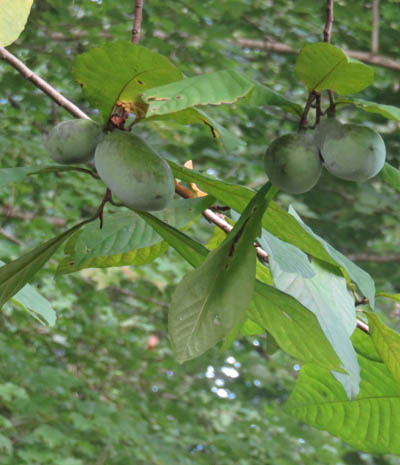 Paw paws in midsummer grow in clusters of up to five fruit.
Paw paws in midsummer grow in clusters of up to five fruit.
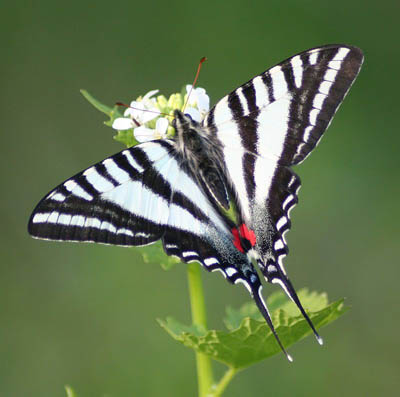
Photo of the Zebra Swallowtail contributed to Wikimedia by Megan McCarty.
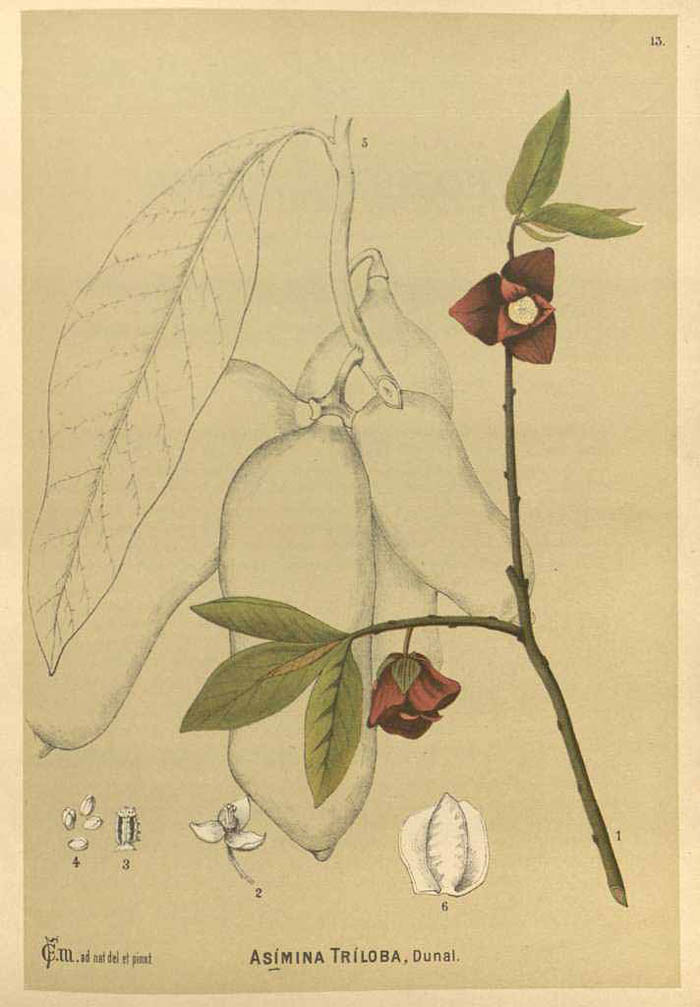
Illustration of paw paw flower with fruit and leaves outlined behind. From C.F. Millspaugh, American Medicinal Plants, 1892.
 Paw paws in midsummer grow in clusters of up to five fruit.
Paw paws in midsummer grow in clusters of up to five fruit. Josef Beery
Josef Beery



